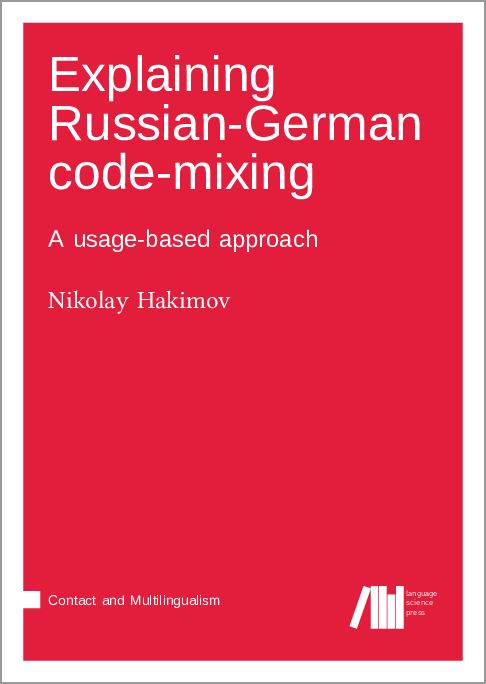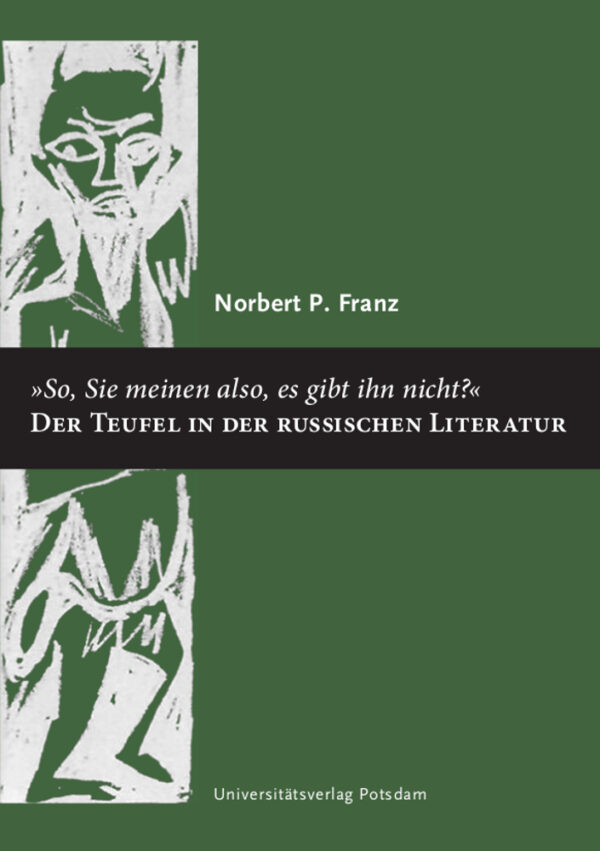In der letzten Zeit sind u.a. diese frei verfügbaren Titel erschienen:
Explaining Russian-German code-mixing: A usage-based approach
Nikolay Hakimov | https://doi.org/10.5281/zenodo.5589446
The study of grammatical variation in language mixing has been at the core of research into bilingual language practices. Although various motivations have been proposed in the literature to account for possible mixing patterns, some of them are either controversial, or remain untested. Little is still known about whether and how frequency of use of linguistic elements can contribute to the patterning of bilingual talk. This book is the first to systematically explore the factor usage frequency in a corpus of bilingual speech. The two aims are (i) to describe and analyze the variation in mixing patterns in the speech of Russia German adolescents and young adults in Germany, and (ii) to propose and test usage-based explanations of variation in mixing patterns in three morphosyntactic contexts: the adjective-modified noun phrase, the prepositional phrase, and the plural marking of German noun insertions in bilingual sentences. In these contexts, German noun insertions combine with either Russian or German words and grammatical markers, thus yielding mixed bilingual and German monolingual constituents in otherwise Russian sentences, the latter also labelled as embedded-language islands. The results suggest that the frequency with which words are used together mediates the distribution of mixing patterns in each of the examined contexts. The differing impacts of co-occurrence frequency are attributed to the distributional and semantic specifics of the analyzed morphosyntactic configurations. Lexical frequency has been found to be another important determinant in this variation. Other factors include recency, or lexical priming, in discourse in the case of prepositional phrases, and phonological and structural similarities and differences in the inflectional systems of the contact languages in the case of plural marking.
„So, Sie meinen also, es gibt ihn nicht?“ – Der Teufel in der russischen Literatur
Norbert P. Franz | https://doi.org/10.25932/publishup-42971 & https://shop.verlag.uni-potsdam.de/shop/so-sie-meinen-also-es-gibt-ihn-nicht/
Der Teufel ist in der russischen Literatur vielfach dargestellt worden, und seine Bilder und Funktionen ändern sich durch die Jahrhunderte – in Entsprechung zum Wandel der Epochen und literarischen Moden. In den Teufelsvorstellungen mischen sich volkstümlich animistische Elemente mit den biblischen Konzepten von Teufeln und Dämonen. Aus beiden Reservoirs schöpft die Literatur, die z. T. die naive Teufelsgläubigkeit verspottet, die sich aufgeklärt gebenden Skeptiker aber auch gerne mit Teufelserscheinungen schreckt. Der Teufel ist ein zentrales Motiv der russischen Literatur, dessen Geschichte nachzuerzählen, einen ganz zentralen Strang der russischen Literatur nachzuerzählen heißt – sub specie diaboli.
Auch wenn er schon lange vor den Romantikern – allen voran Nikolaj Gogol’ – einen prominenten Platz in der russischen Literatur inne hatte, mischen sich seitdem volkstümliche Vorstellungen mit dem biblischen Erbe. Im Volk sind Teufelsvorstellungen bis heute populär, die gebildeten Schichten zeigen sich eher skeptisch, weshalb die realistische Literatur – mit der großen Ausnahme Fedor Dostoevskij – den Teufel eher mied, die Modernisten gestalteten ihn dafür umso lieber. Einen Höhepunkt erreicht er bei Michail Bulgakov. Zeitgenossen fehlt häufig der religiöse Subtext.
Handbook of Polish, Czech and Slovak Holocaust Fiction: Works and Contexts
Elisa-Maria Hiemer, Jiří Holý, Agata Firlej & Hana Nichtburgerová (Hrsg.) | https://doi.org/10.1515/9783110671056
The Handbook of Polish, Czech, and Slovak Holocaust Fiction aims to increase the visibility and show the versatility of works from East-Central European countries. It is the first encyclopedic work to bridge the gap between the literary production of countries that are considered to be main sites of the Holocaust and their recognition in international academic and public discourse. It contains over 100 entries offering not only facts about the content and motifs but also pointing out the characteristic fictional features of each work and its meaning for academic discourse and wider reception in the country of origin and abroad.
The publication will appeal to the academic and broader public interested in the representation of the Holocaust, anti-Semitism, and World War II in literature and the arts. Besides prose, it also considers poetry and theatrical plays from 1943 through 2018. An introduction to the historical events and cultural developments in Poland, Czechoslovakia, Czech, and Slovak Republic, and their impact on the artistic output helps to contextualise the motif changes and fictional strategies that authors have been applying for decades.
The publication is the result of long-term scholarly cooperation of specialists from four countries and several dozen academic centres.


